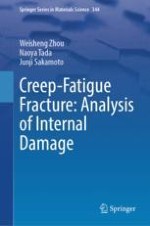2024 | OriginalPaper | Buchkapitel
4. Initiation and Growth Behavior of Small Inner Crack
verfasst von : Weisheng Zhou, Naoya Tada, Junji Sakamoto
Erschienen in: Creep-Fatigue Fracture: Analysis of Internal Damage
Verlag: Springer Nature Singapore
Aktivieren Sie unsere intelligente Suche, um passende Fachinhalte oder Patente zu finden.
Wählen Sie Textabschnitte aus um mit Künstlicher Intelligenz passenden Patente zu finden. powered by
Markieren Sie Textabschnitte, um KI-gestützt weitere passende Inhalte zu finden. powered by
